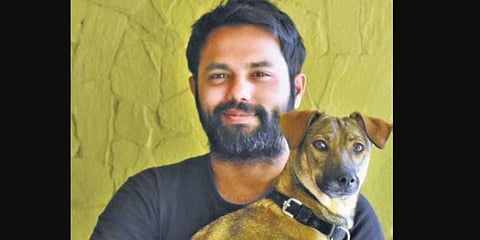

Rohan Chakravarty, who is well-known as the creator of Green Humour a series of cartoons, comics and illustrations on wildlife and nature conservation is out with a new book. Titled, Green Humour For A Greying Planet, the book compiles the best of his gag cartoons and comic strips based on wildlife and nature. His work is a satirical approach on varied aspects of the natural world and the threats to its conservation. Cartoons from Green Humour appear periodically in newspaper columns, magazines and journals.
Edited excerpts:
How did you come up with this book?
My comic strip Green Humour has been running in the print and the web for 11 years now. Although I had planned to compile my published work for a long time, I gave up on the idea after a few early rejections from publishers. Compiling already published work can be a little dreary for an artist, as it is more about curating and less about creating. But I think I needed to age a little and slow down before I could get around to it! Finally, after Penguin showed an interest last year in my pitch, my interest in the endeavour was revived, and this time with age on my side, and a fabulous curation and designing team from Penguin, Green Humour For A Greying Planet could finally happen.
Give us an insight into your research.
The cartoons you will see in Green Humour For A Greying Planet deal with a wide variety of issues: ecology, conservation, sustainability, wildlife biology, and even Covid. The research varied from cartoon to cartoon. Some comics were inspired by personal sightings of the wildlife, others resulted from long hours of reading both popular writing and scientific research.
According to you, what are the environmental concerns in India that require immediate attention?
The foremost concern is that the ruling government which is entirely averse to engaging with science, either needs to change its approach drastically or be voted out of power. At a time when science should be governing environmental policies, it is the reverse in India. Here, the government first declares its shoddy vision for the ‘development’ of a given place, and then directs the science to bring findings in alignment with that vision. Other environmental problems that India faces are our dependence on non-renewable energy, a general lack of environmental awareness, and our population of 1.3 billion.
WATCH |
When and how did you decide to be a cartoonist?
Although as a befuddled teenager I strayed into dentistry as my qualification, I realised that drawing cartoons on wildlife was my calling after an encounter with a tigress on a visit to Nagzira Tiger Reserve. After a three-year enjoyable stint in the animation industry (2011-14), I quit my day job to devote time entirely towards Green Humour, which by then had started appearing in a few print columns and had also been picked for online syndication by the Universal Press Syndicate. My first solo exhibition in Bengaluru in 2014 was quite successful, and gave me the financial backing to pursue cartooning full-time.
What is the best part of your career?
The fact that because I draw about wildlife and ecology, themes about which we know so little about and our knowledge is getting updated and revised with every passing day, it feels like a gigantic, infinite canvas.
Any exciting projects in the pipeline?
Among the most exciting projects for this year are an illustrated urban biodiversity map of my hometown, Hyderabad; an illustrated set of 45 endangered shark and rays for a team of marine biologists and communicators at the Save Our Seas Foundation in South Africa; and another book with Penguin, which is a series of detective comic stories based in nature.